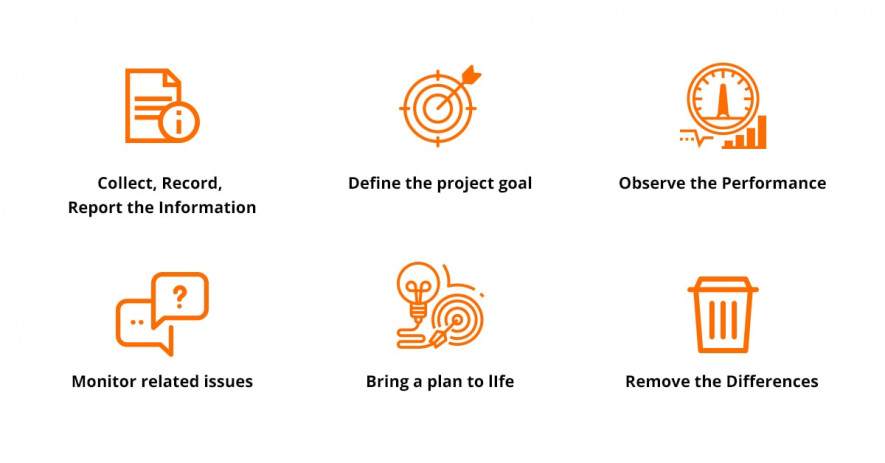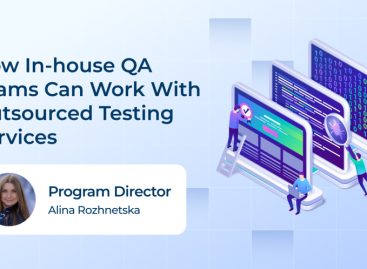- QATestLab Blog >
- QA Management >
- Control, Monitoring and Estimation in Software Testing
Control, Monitoring and Estimation in Software Testing

Note: the article was updated in March 2019.
Project Manager faces a wide range of potential testing problems, which is a reason to be well prepared for difficulties. The reliable helping hand for QA specialist is a proper risk assessment and estimation to predict the unexpected outcomes of testing. Experience from the previously completed software projects will assist in the proper estimation of time, resources and risks at the project. Each aspect of QC (quality control), from time to risks, should be defined according to the area of impact and must be a subject for software test estimation.
Typical issues of software testing and how to cope with them
Advanced technologies. In case you are a project manager, who faced a newly implemented technological feature, which is not very common among the testing experts, you need to clarify all unknown aspects. Different techniques, standards, and systems which are not widespread in use are the main factors of errors. The lack of experience will probably cause project difficulties, so it is important to make the involved specialists familiar with new technologies during introductory training.
Various software specifications. Software specifications become different with the invention of new versions of programs. The controversial issues regarding the software system requirements often cause various errors, affect the product’s quality, and even a failure of a project. To avoid this situation and take control over it, it is necessary to define the exact list of requirements and specifications which are going to be examined. Project managers should know the approximate number of operations to plan how much time can be dedicated to all processes in complex.
Building a team. There is a risk to involve specialists, who are not experienced in the testing of a definite type of software or its single aspect. Even, if each tester is prepared enough, it is possible to divide the duties improperly, not in compliance with the specific skills of each tester. Form the exact list of professionals who will be responsible for performing each certain action, basing on their qualification and specific set of skills. The specialists have to understand the architecture of software and to define the source of an error in case it appears.
Organization and Performance. To meet the time-frames, prescribed for testing, it is important to define the expectations of stakeholders. Identify the points which must be under attention to save time on testing. Clarification of the priorities will help to form the budget and organize time-management in the most effective way.
Considering the stated peculiarities, a risk management strategy should consist of the following stages:
- define risks and their reasons;
- divide the risks by the degree of their impact;
- develop a plan which will be a solution for each risk;
- track and monitor the sources of risks;
- communicate on the risk issues during the project performance.
Steps to achieve the proper planning and workflow organization
Early planning of risks will identify the threats and form the basis for estimating a possible loss. As a result, the creation of the risk-solving strategy will lead to their prevention.
 Collect, record and report all the information about the project in a periodic order. To apply the given data properly, define the primary goal of the project and its performance standard. After the start of the project observe its actual conditions and performance to compare it with the planned strategy and expectations. Record and Monitor all related problems which follow the project and bring the actual performance to the expected result. Take action to remove the differences between real running project and previously created plan of software testing estimation.
Collect, record and report all the information about the project in a periodic order. To apply the given data properly, define the primary goal of the project and its performance standard. After the start of the project observe its actual conditions and performance to compare it with the planned strategy and expectations. Record and Monitor all related problems which follow the project and bring the actual performance to the expected result. Take action to remove the differences between real running project and previously created plan of software testing estimation.
Despite the number of testing activities and procedures, the most common issues for estimation are alike: the reformation of the project’s budget, vague requirements, and deadlines. Possible consequences which you may face are missing the deadline or exceed of a budget, that leads to loss of the trust of customer and stakeholders.
Methods of effective estimation and risk prevention
- Perform the early-planning of the risks no to be driven by unexpected critical situations. Estimate the most optimal, the most probable and the worst scenario of process development. Dedicate some extra time for the project in case the team faces the lack of experience and knowledge, the process goes in the wrong direction, some of the team members quit or some new requirements are added to the project.
- Make checklists, and compare them with those for previous projects. Focus on similar projects and avoid the treats you faced or may face. The indisputable benefit of the checklist is its ability to be applied in further activities, so it would be better to have a ready one. It can also be adjusted and modified at any time depending on specific project circumstances.
- Define priority risks, ranking each one basing on its influence and importance. Focus on the most probable threats. Make a list of the most probable risks. In major cases, you can apply such a list in the next projects. Classify sufficient risks into smaller, which would be easy to recognize and solve.
- Prevent the risk by communication with key stakeholders or customers to meet their needs and encourage them to communicate during the entire project. Outline the most preferable expectations of the target audience. However, you should not extend the scope of estimation after you detect the risks and issues, unless there is a direct recommendation to do so.
To sum up all stated above
Each Project Manager cares about effective QA risk management strategy, thus, should consider the factors, that influence such elements as deadlines and project budget flexibility. QA risk assessment will indicate the most probable threats in case you conduct a qualified testing estimation before the project start. Effective estimation depends on careful risk assessment and prediction of not likely scenarios. After you know the project goal and directions of testing, monitor its performance with planned results, compare the expectations with reality and do your best to remove the indicated differences using the described tips. Properly documented and assessed test plan can save the resources allocated to the project. The product is released faster than it was expected, and you get the correspondent reputation among the consumers and competitors.
Learn more from QATestLab
Related Posts:
- Automation, AI Testing, and Accessibility: Key Trends from VDS 2025
- Compliance Testing in iGaming: 5 Common Mistakes and How to Avoid Them
- SBC Summit 2025: Automation in iGaming and Betting Niches







No Comments Yet!
You can be the one to start a conversation.